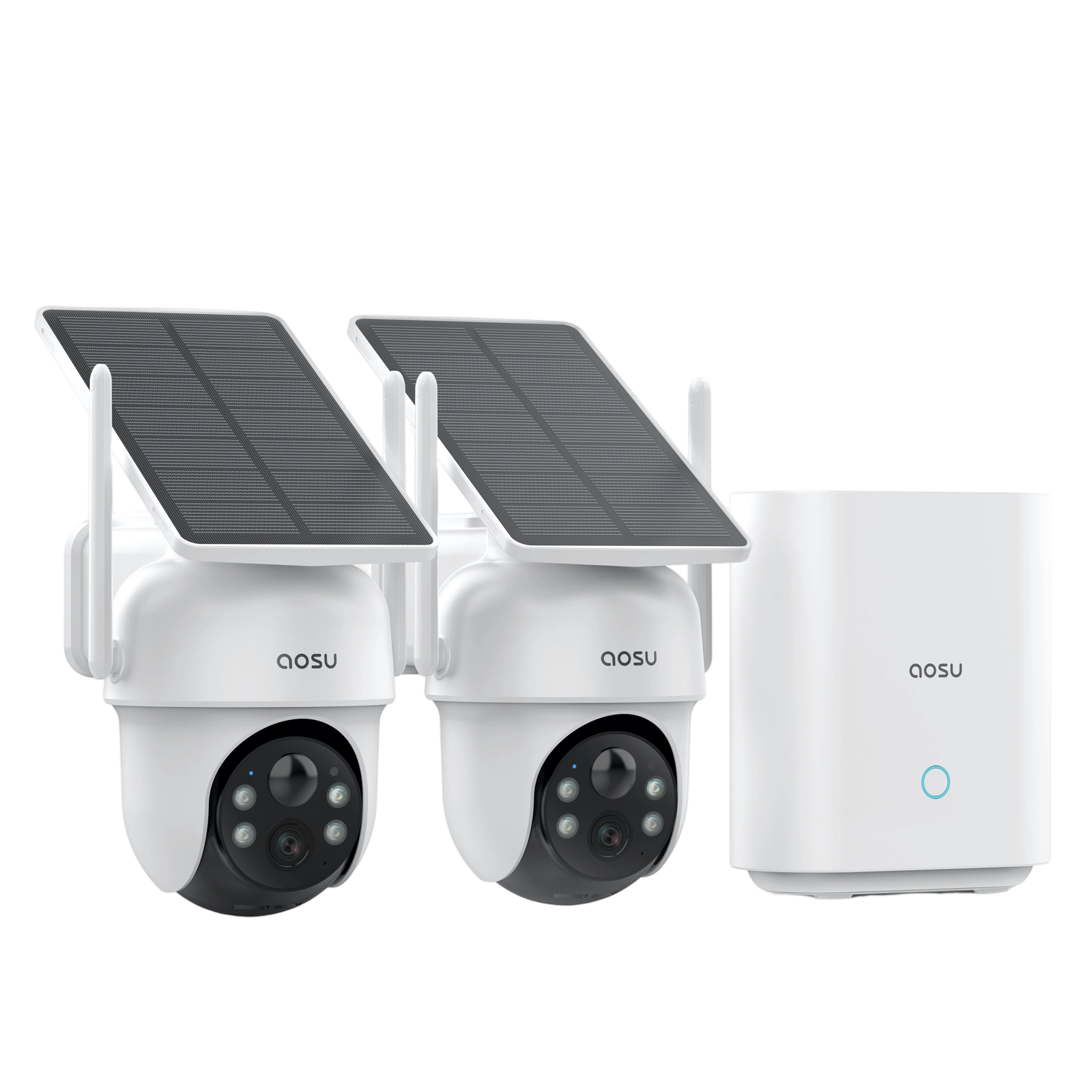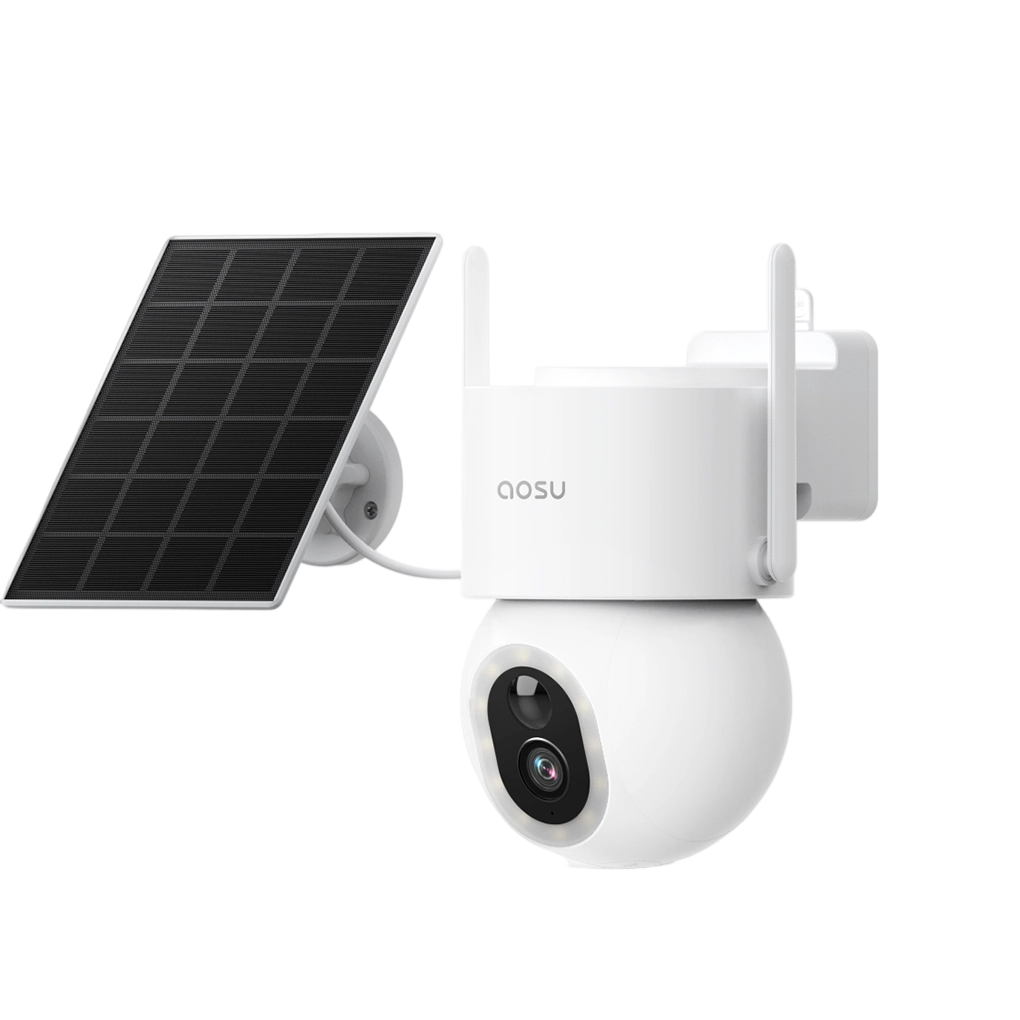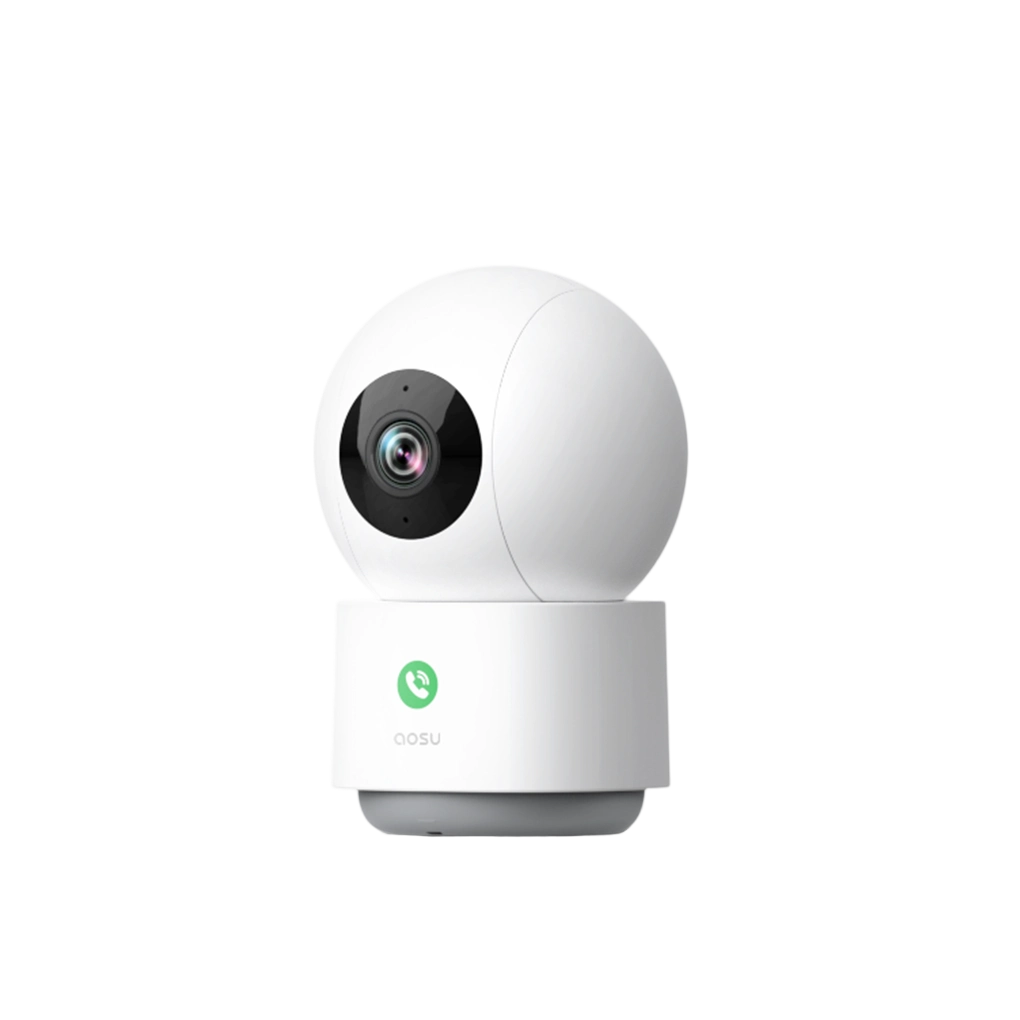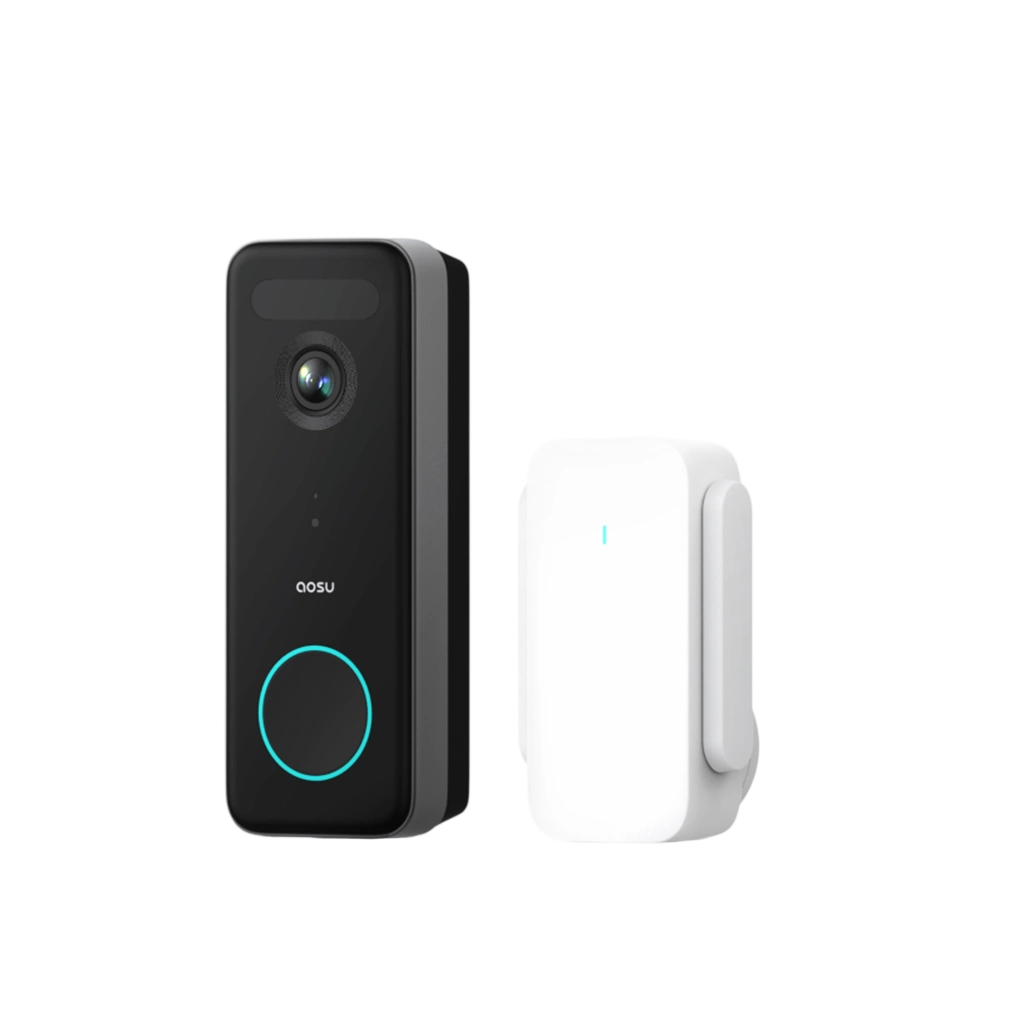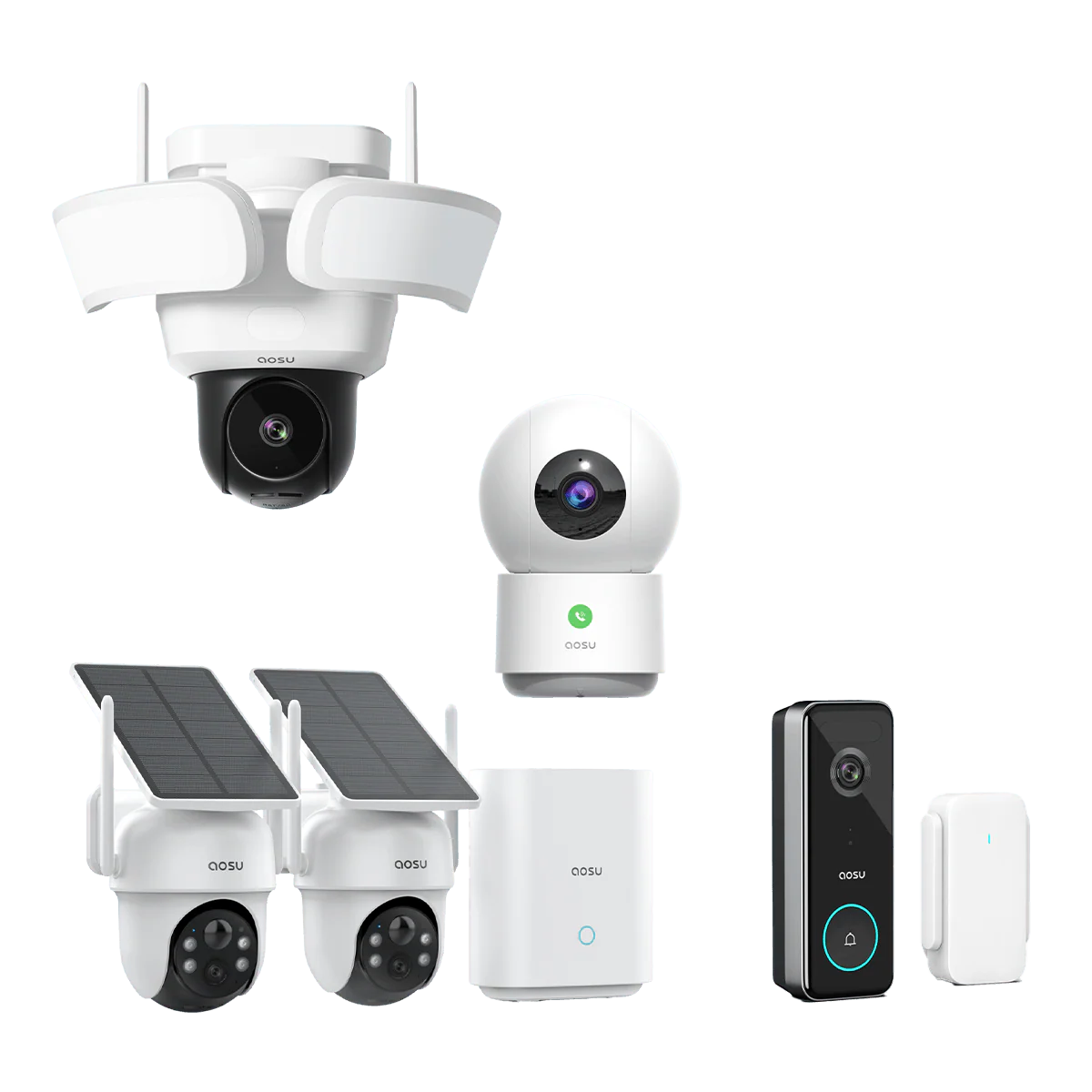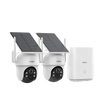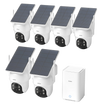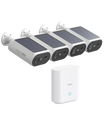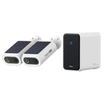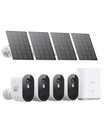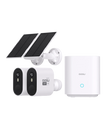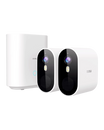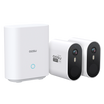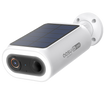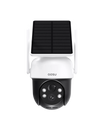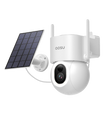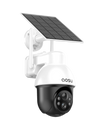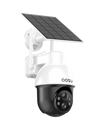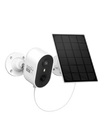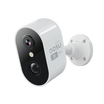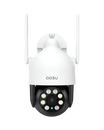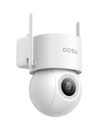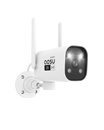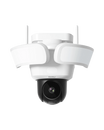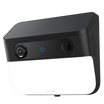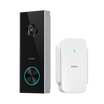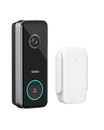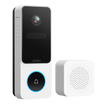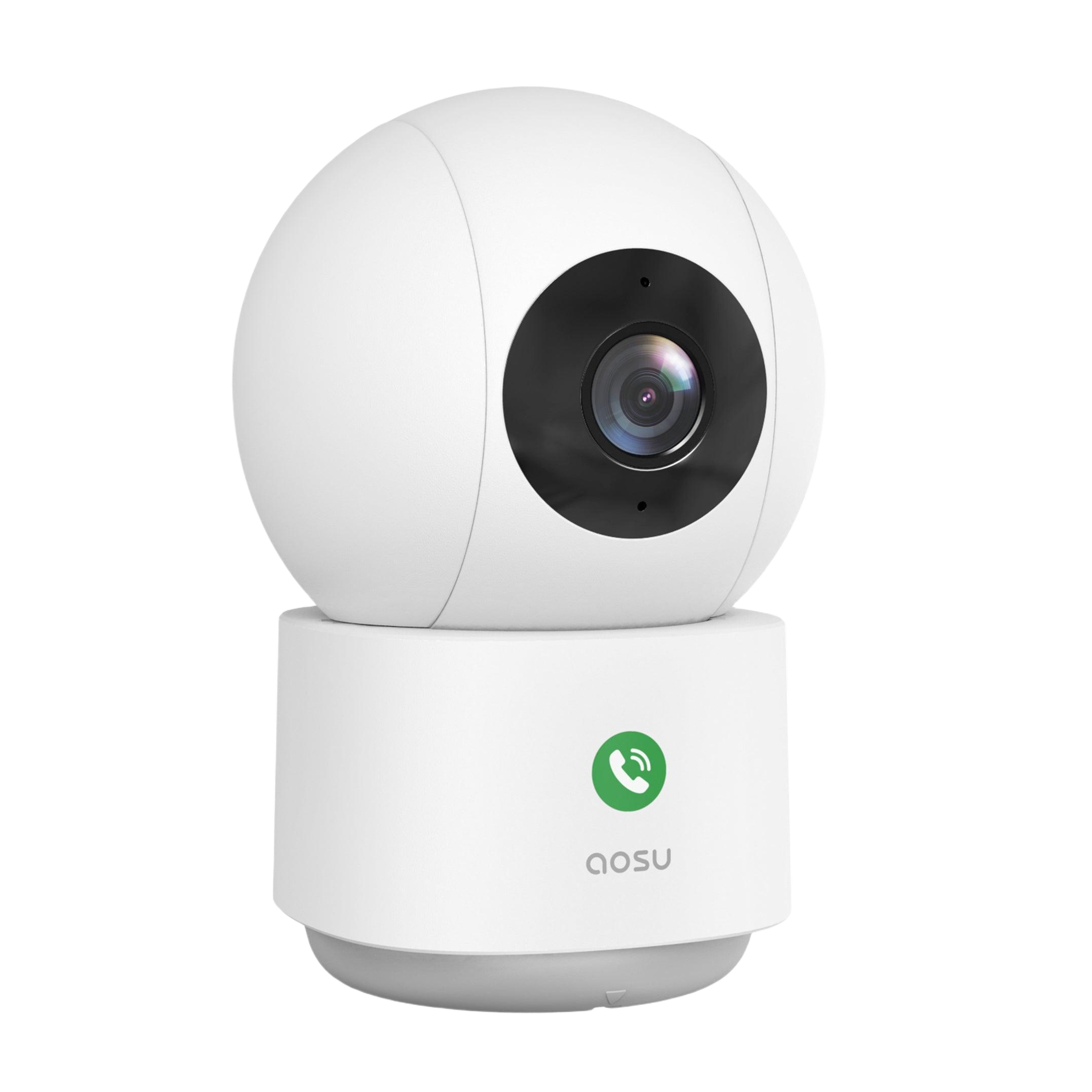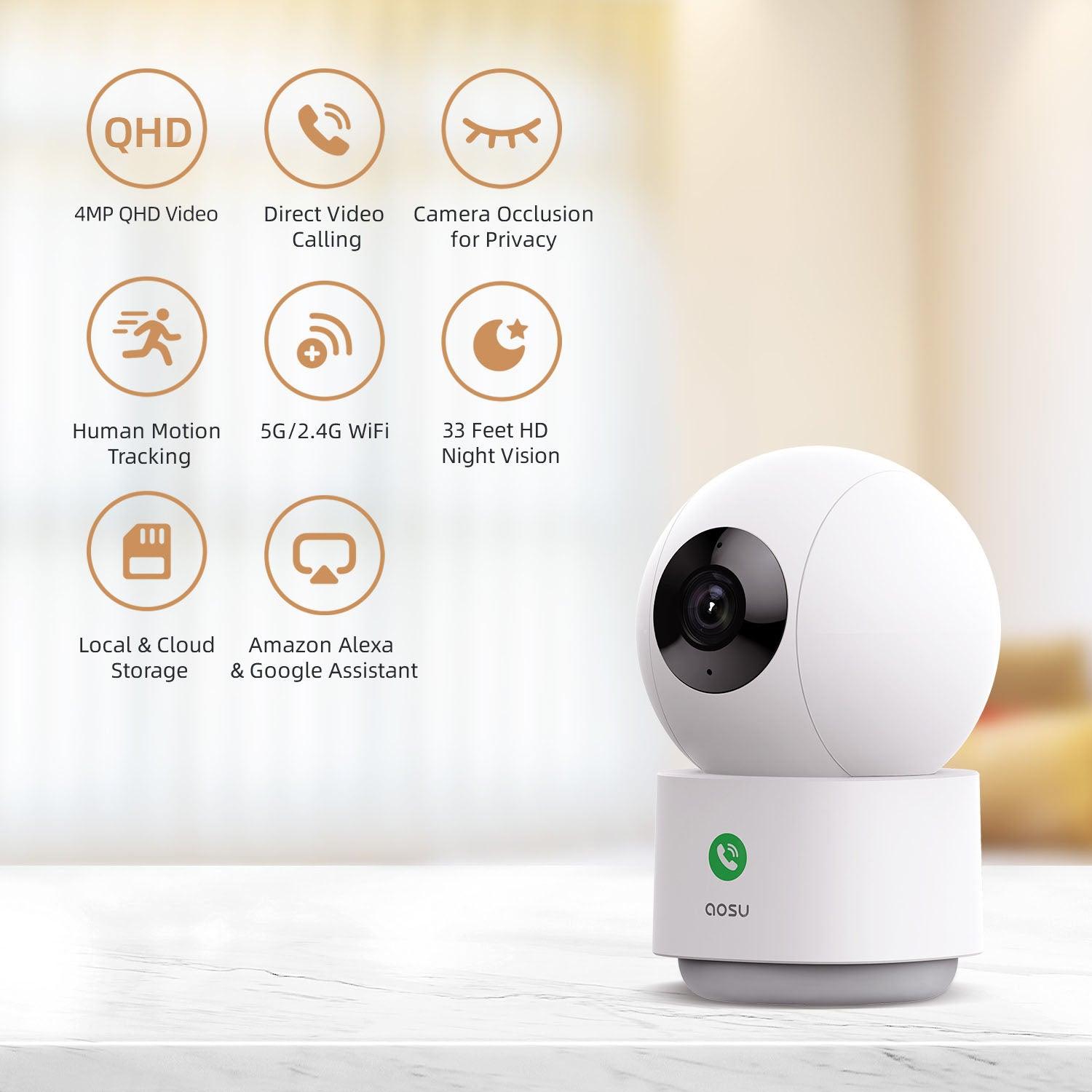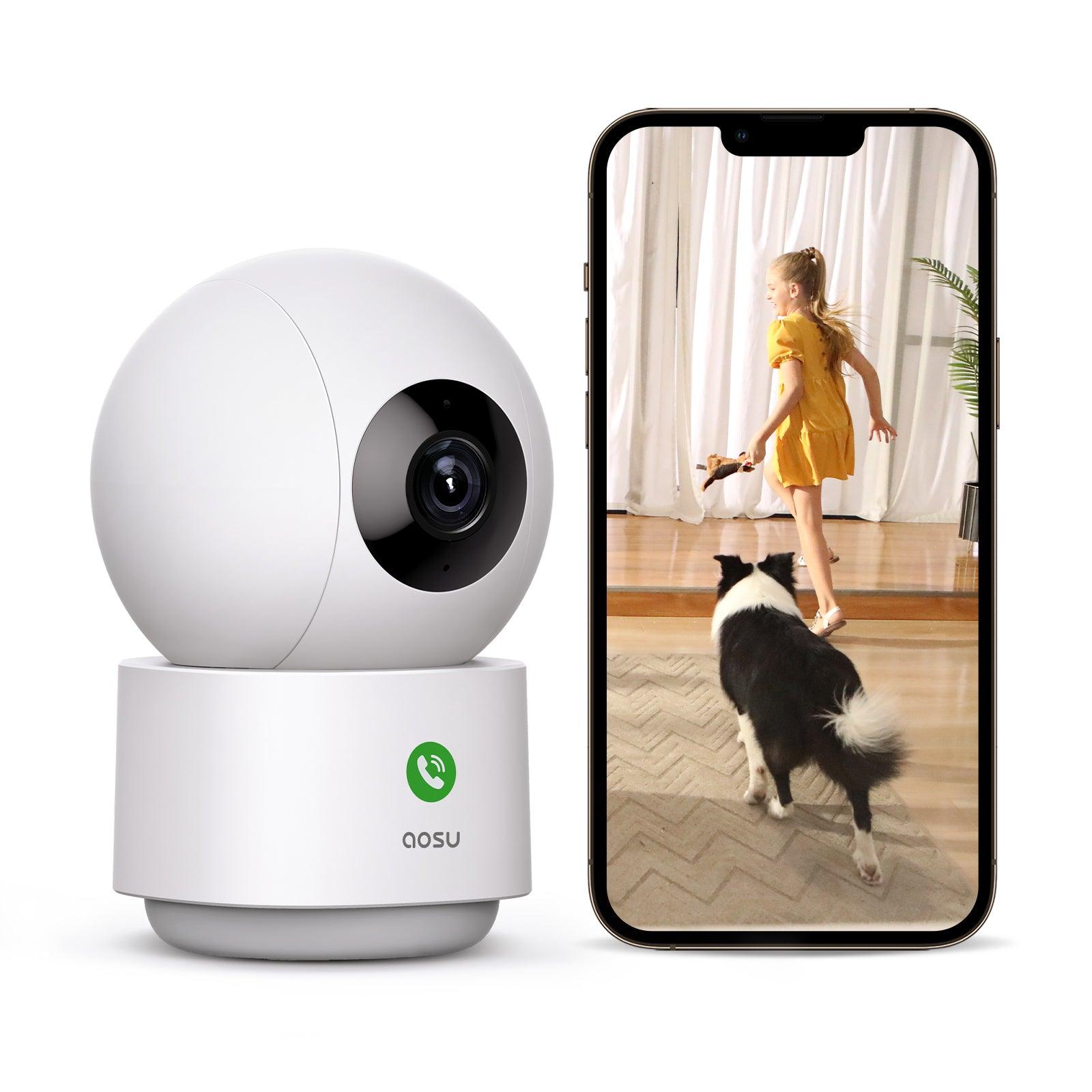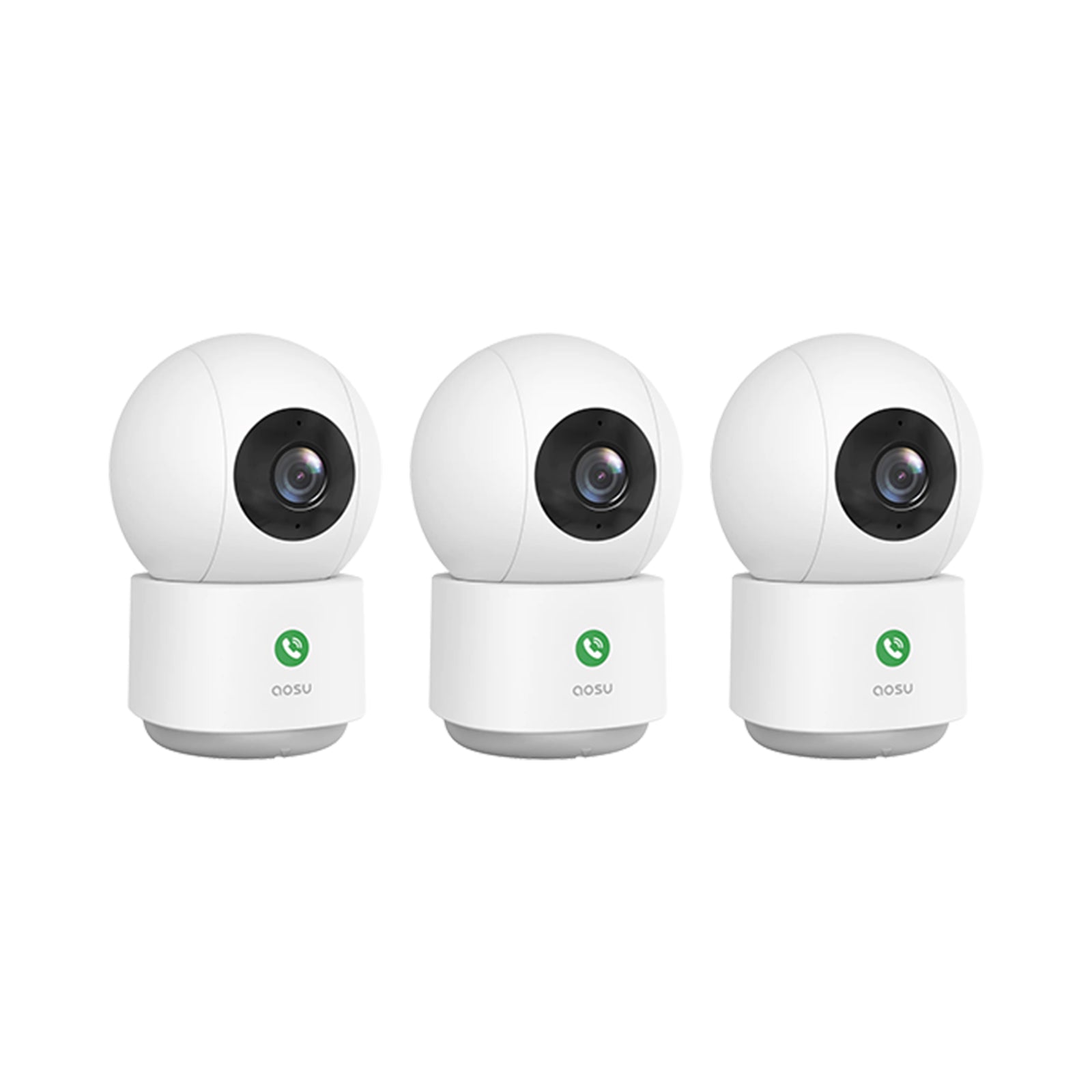Indoor Security Cameras
Explore our selected indoor security cameras to protect your home. Aosu indoor home security cameras provide crystal-clear 2K or 4MP QHD video quality, 360-degree coverage, and dual Wi-Fi modes. Smart motion tracking and night vision features enable precise monitoring, even in low-light conditions. More types of cameras are available at aosu. More types of cameras are available at aosu. Click here to see how different types of security cameras protect your home.
FAQ
Are Indoor Security Cameras Effective at Night?
Are Indoor Security Cameras Effective at Night?
Of course! Most security cameras come equipped with night vision whether for indoor or outdoor applications, so that they can provide clear imagery in low-light environments. This ensures round-the-clock protection for your home.
aosu's wireless indoor camera provides effective nighttime monitoring solutions. Equipped with advanced infrared night vision technology, our wi-fi cameras ensure clear and bright footage even in low-light conditions. The 2K or 4MP clear night vision, along with 8 separated infrared LEDs, provides optimal visibility in the dark. Additionally, the invisible 940nm infrared LEDs contribute to creating an environment conducive to your baby's good sleeping habits. Whether you need to monitor your home during nighttime or check on your loved ones, aosu indoor security cameras offer reliable and effective performance in various lighting conditions.
Can I Ensure My Privacy With aosu Security Cameras?
Can I Ensure My Privacy With aosu Security Cameras?
Absolutely! aosu's security cameras provide robust privacy protection features to safeguard your personal information. With adjustable privacy zones and encrypted transmission, you have control over who can access the camera feed. These customizable privacy settings ensure that only authorized individuals can view the footage, enhancing your privacy and peace of mind.
Click here for more aosu's privacy policy.
Does the Indoor Security Camera Have Audio Capabilities?
Does the Indoor Security Camera Have Audio Capabilities?
Yes! The majority of indoor security cameras feature two-way audio, allowing real-time communication with family members through the camera and serving as a remote warning to potential intruders. Take the aosu, for example, it features one-touch calls, enabling real-time audio communication. The inclusion of audio features adds an extra layer of communication and connectivity to complement the video surveillance provided by aosu security cameras.
What Features Do Indoor Security Cameras Typically Have?
What Features Do Indoor Security Cameras Typically Have?
Indoor security cameras typically come with a range of below features, designed to enhance surveillance and security:
- High-Definition Video: Most indoor security cameras offer high-definition video quality, allowing for clear and detailed footage.
- Night Vision: Equipped with infrared LEDs, night vision enables the camera to capture footage in low-light or complete darkness, ensuring 24/7 surveillance.
- Motion Detection: Motion sensors trigger recording or alert notifications when movement is detected, providing a proactive approach to security.
- Two-Way Audio: Many cameras have built-in microphones and speakers, enabling two-way communication. This allows users to listen to audio from the camera's location and speak through the camera using a mobile app.
- Pan and Tilt: Some cameras have pan-and-tilt capabilities, allowing users to remotely control the camera's movement and change the viewing angle.
- Wide-Angle Lens: A wide-angle lens provides a broader field of view, reducing blind spots and capturing more of the monitored area.
- Cloud Storage: Cloud storage services allow users to store recorded footage remotely, providing access to video clips from anywhere with an internet connection.
- Local Storage: Cameras may have slots for SD cards or support external hard drives for local storage of video recordings.
- Mobile App Integration: Security cameras often come with dedicated mobile apps, enabling users to remotely monitor live feeds, receive alerts, and manage camera settings from their smartphones or tablets.
- Smart Home Integration: Integration with smart home platforms like Amazon Alexa, Google Assistant, or Apple HomeKit allows users to control cameras using voice commands and integrate them into broader smart home ecosystems.
- Privacy Features: To address privacy concerns, some cameras offer features like privacy zones, allowing users to mask specific areas within the camera's field of view.
- Encryption and Security Protocols: Robust security measures, including encryption of data transmission, help protect the integrity of the footage and prevent unauthorized access.
- Mobile Alerts and Notifications: Instant alerts and notifications are sent to the user's mobile device when motion is detected or other specified events occur, keeping them informed in real time.
Aosu indoor home security cameras deliver a range of features to provide your home with all-around surveillance and protection.
Do aosu Cameras Support Remote Monitoring?
Do aosu Cameras Support Remote Monitoring?
Yes, through the aosu APP (compatible with both Samsung and Apple devices), you can remotely monitor indoor situations anytime, anywhere. This feature enables you to stay in control of your home even when you are away.
Here is a more detailed guide on remote video monitoring.
How Does the Motion Detection Feature Work?
How Does the Motion Detection Feature Work?
The motion detection feature in aosu security cameras is a sophisticated technology designed to enhance your surveillance experience. Motion detection allows the camera to start recording or send alert notifications when motion is detected. Users can customize sensitivity settings to accurately capture critical moments and avoid false alarms.
Do Indoor Security Cameras Rcord All The Time?
Do Indoor Security Cameras Rcord All The Time?
Whether indoor security cameras record continuously or not depends on the specific camera model and the settings configured by the user.
It's crucial to review the user manual or settings of the specific indoor security camera model you're using to understand its recording capabilities and configure them according to your preferences. Additionally, consider the available storage options, as continuous recording may require more significant storage capacity compared to motion-activated or event-based recording.
What is the Difference Between an Indoor and Outdoor Security Camera?
What is the Difference Between an Indoor and Outdoor Security Camera?
Indoor security cameras are more compact and designed for indoor environments, offering features like two-way audio and integration with smart home systems. They focus on providing clear surveillance within smaller indoor areas while ensuring privacy and ease of installation near standard electrical outlets.
Outdoor security cameras often have wider viewing angles to cover larger areas such as driveways, gardens, or yards. Besides, outdoor cameras are built to withstand varying weather conditions, including rain, snow, heat, and humidity. They are typically weatherproof and rated with an IP (Ingress Protection) rating such as aosu.
Different types of security cameras play different roles in protecting your property and family safety. If you are not sure about which type should you choose, read this guide on how they play their parts to make a better choice.
Do All Indoor Security Cameras Require WIFI?
Do All Indoor Security Cameras Require WIFI?
Not necessarily. While Wi-Fi connectivity is common and offers benefits like remote monitoring and alerts, there are indoor security camera options available that do not solely rely on Wi-Fi for their core operation. There are some alternatives:
- Wired Cameras: Some indoor security cameras connect directly to a DVR (Digital Video Recorder) or NVR (Network Video Recorder) via Ethernet cables. These systems do not require Wi-Fi for operation but may still offer remote viewing capabilities through a network connection.
- Local Storage Cameras: Cameras that store footage locally on a microSD card or a local storage device do not necessarily need Wi-Fi for basic recording functionality. However, Wi-Fi may be required for remote access to footage stored on these devices.
- Battery-Powered Cameras: Some indoor cameras operate on batteries and may not require a constant Wi-Fi connection for basic functionality. However, Wi-Fi may be needed for remote access and alerts.
Have More Questions?
Have More Questions?
For more answers on product information, technology, and usage, etc, visit our FAQ page or contact us directly!
Blog posts
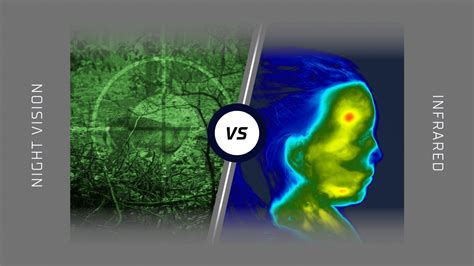
Night Vision vs Infrared: What’s the Real Difference?
Have you ever checked your security camera at night only to find a blurry image or pitch-black footage? It’s frustrating. You might even start wondering, isn’t this camera supposed to have “night ...
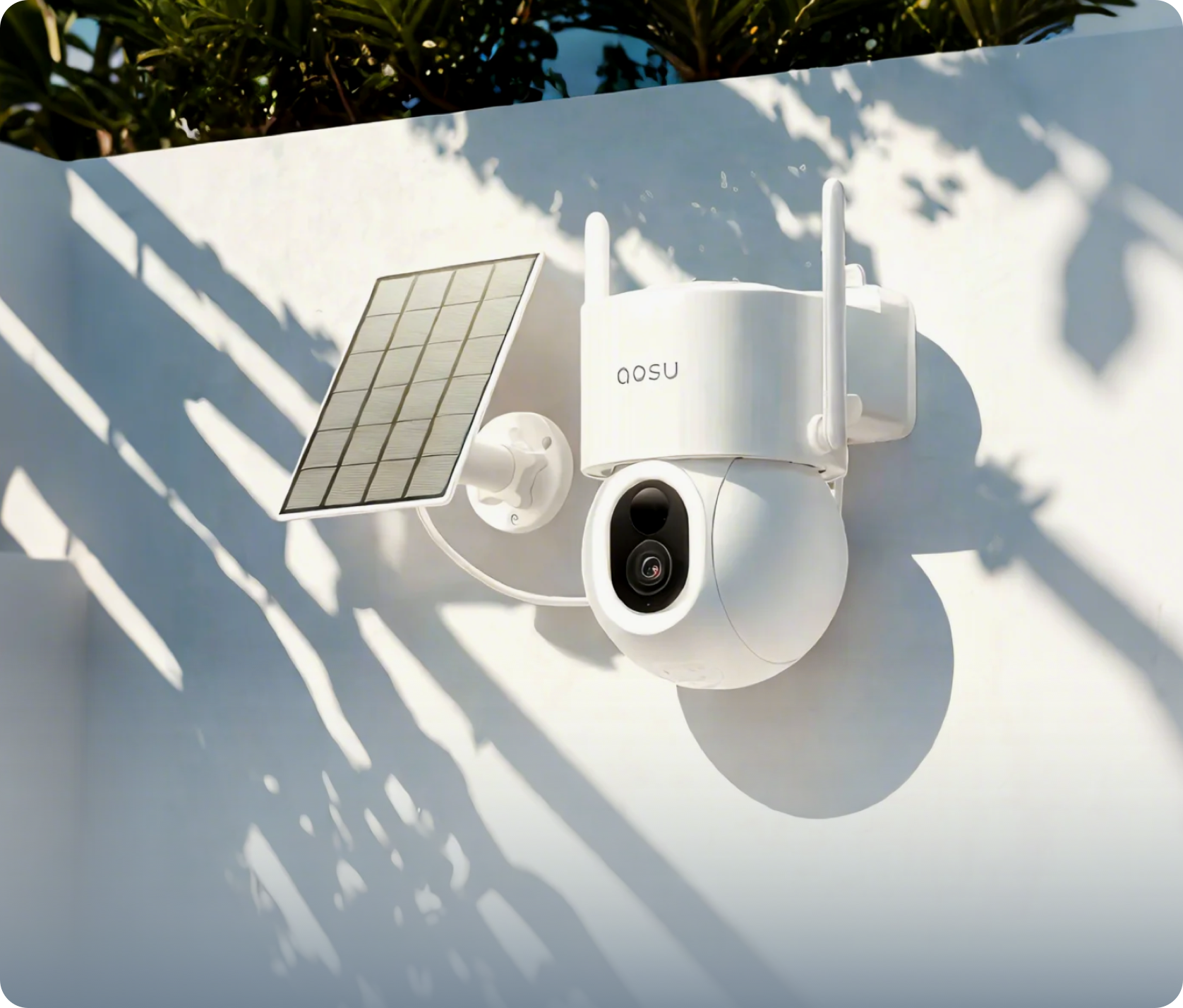
Is There a Dash Cam Without Wires? Here’s What to Know
Search “is there a dash cam without wires” and you’ll get a mix of answers, most of them vague. Some point to Wi-Fi dash cams, others still need power cables running across your dashboard. The tru...
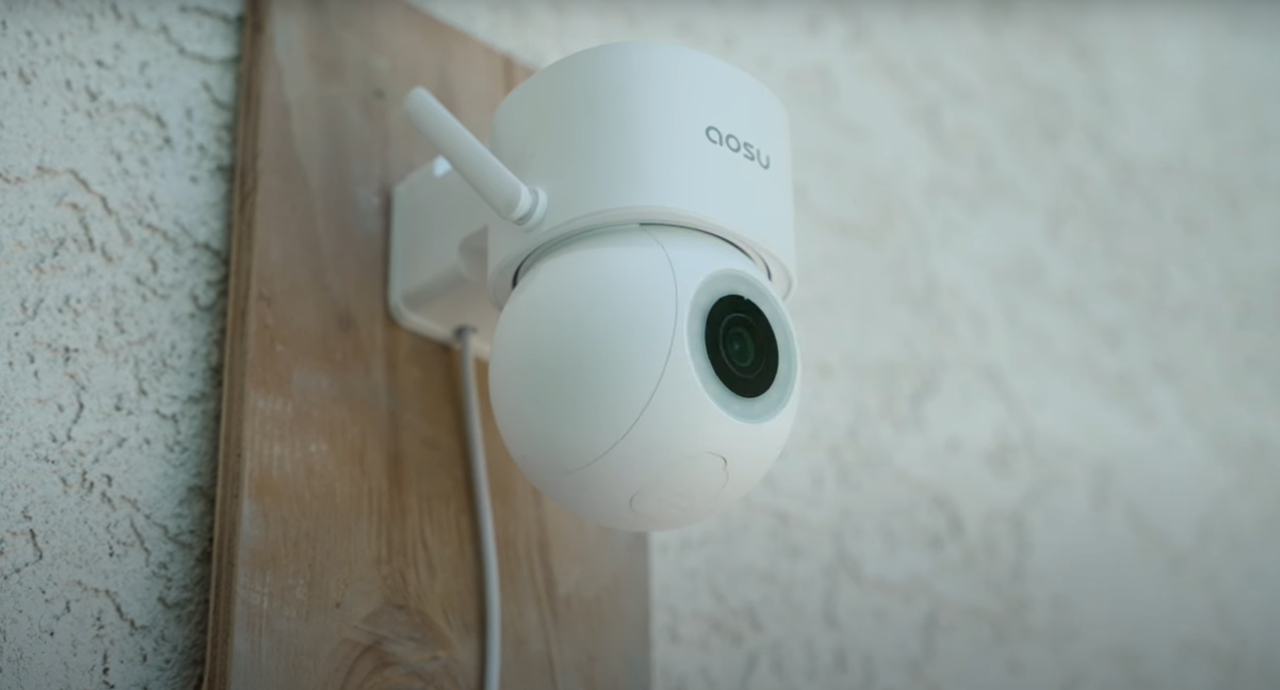
How Do You Know If a CCTV Camera Is On: 6 Easy Ways to Check
Are you sure your CCTV camera is really working? Many people install cameras and think they are always recording. But sometimes, they are not. If your camera is off or not recording, you could mis...






